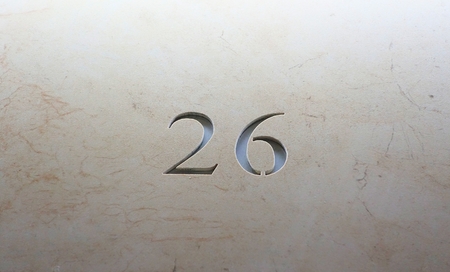Introduction to the Elder Futhark
The Elder Futhark stands as one of history’s most enigmatic and evocative alphabets, its angular runes echoing across the centuries from the mists of northern Europe. First emerging between the 2nd and 8th centuries CE, these runic characters formed the earliest known system of writing among Germanic peoples. The name “Futhark” derives from the first six runes—Fehu, Uruz, Thurisaz, Ansuz, Raidho, and Kaunan—much as “alphabet” arises from Alpha and Beta in Greek tradition. Yet, what sets the Elder Futhark apart is not merely its role as a vehicle for communication but also its profound spiritual and cultural resonance.
The study of the Elder Futhark has long captivated British archaeologists and scholars. The discovery of rune-inscribed artefacts in regions such as Northumbria and Kent speaks to ancient connections between Anglo-Saxon England and the broader Germanic world. Each rune, inscribed on wood, bone or stone, offers tantalising glimpses into beliefs, practices, and daily life that would otherwise be lost to time. While many inscriptions remain shrouded in mystery, their presence within burial sites or ritual spaces hints at functions far beyond mere record-keeping—perhaps invoking protection, memorialising ancestors or marking sacred boundaries.
Within British scholarship, the interpretation of these ancient symbols has often blended rigorous academic inquiry with a sense of reverence for their enduring mystique. From early antiquarians to modern runologists, each generation has sought to decipher not only the literal meanings but also the deeper significance encoded within each character. Thus, as we begin our journey through the individual meanings and historical contexts of each Elder Futhark rune, we do so standing upon a foundation of both scholarly tradition and quiet wonder—a testament to Britain’s unique role in preserving and unravelling the secrets of this ancient script.
2. Structure and Composition of the Elder Futhark
The Elder Futhark, as the earliest known form of the runic alphabets, holds a distinguished place in the tapestry of Northern European history. Its structure is not arbitrary; rather, it reflects a methodical order that echoes both linguistic necessity and spiritual symbolism. The script consists of 24 runes, systematically arranged into three distinct groups known as aettir. Each aett comprises eight runes, and together they form an alphabet that supported not only communication but also esoteric practices among early Germanic peoples.
The Division into Aettir
This division into aettir (singular: aett) is more than a mnemonic device; it hints at a deeper cosmological or tribal significance. Traditionally, each aett has been associated with different deities or mythological concepts within Norse culture, offering a glimpse into how language and belief were intertwined. For ease of reference, the following table outlines the three aettir and their constituent runes:
| Aett | Runes Included | Traditional Associations |
|---|---|---|
| First Aett (Freyr’s Aett) | Fehu, Uruz, Thurisaz, Ansuz, Raidho, Kenaz, Gebo, Wunjo | Wealth, power, divine connection |
| Second Aett (Heimdall’s Aett) | Hagalaz, Nauthiz, Isa, Jera, Eihwaz, Perthro, Algiz, Sowilo | Natural forces, cycles, protection |
| Third Aett (Tyr’s Aett) | Tiwaz, Berkana, Ehwaz, Mannaz, Laguz, Ingwaz, Dagaz, Othala | Justice, humanity, heritage |
The Phonetic System of the Elder Futhark
The Elder Futhark is fundamentally a phonetic script. Each rune corresponds to a particular sound or set of sounds found in the Proto-Germanic language. Unlike modern alphabets used in Britain today—which are largely descended from Latin—the Futhark’s arrangement reflects both practical considerations for carving on wood or stone and an attempt to encapsulate spoken language. This system laid groundwork for subsequent runic scripts by providing a flexible yet coherent way to represent evolving dialects and accents across Germanic-speaking regions.
Influence on Later British Runic Traditions
The organisation and phonetics of the Elder Futhark had lasting influence on later runic alphabets used in the British Isles—notably the Anglo-Saxon Futhorc. As runic traditions crossed the North Sea with migrating peoples and shifting kingdoms during the early medieval period, adaptations were made to accommodate local languages. New symbols were added for sounds unique to Old English or Norse-influenced dialects prevalent in what is now England and Scotland. Yet the tripartite division into aettir, as well as the core phonetic values of many original Elder Futhark runes, persisted as a foundation for these later systems.
A Living Tradition Rooted in Order and Adaptation
In sum, the structure and composition of the Elder Futhark reveal not only an organised approach to writing but also a reverence for tradition and adaptability. This balance between order and evolution is reflected in how runic knowledge migrated and transformed throughout history—leaving its indelible mark upon British cultural heritage just as much as it did across Scandinavia and Continental Europe.

3. Interpretation of Individual Runes
Unveiling the Essence of Each Rune
The Elder Futhark, comprising twenty-four runes, presents a rich tapestry of meanings that have traversed centuries. Each rune is not merely a symbol but a vessel carrying distinct energies, concepts, and cultural narratives. To truly appreciate these ancient characters, one must delve into their individual attributes, traditional interpretations, and the echoes they have left upon British soil.
Fehu (ᚠ) – Wealth and Abundance
Traditionally representing cattle and material wealth, Fehu signifies prosperity and the dynamic movement of resources. In early northern societies, including those who settled in Britain, cattle were a measure of fortune. The rune thus came to embody not only tangible assets but also the flow of luck and success—qualities esteemed in both Norse and early Anglo-Saxon communities.
Uruz (ᚢ) – Strength and Vitality
Associated with the wild aurochs, Uruz stands for raw power, endurance, and untamed potential. Its presence in rune inscriptions found in Britain attests to the admiration for strength and resilience within early English culture—a value reflected in both mythic sagas and daily life.
Thurisaz (ᚦ) – Protection and Challenge
This rune invokes the thorn or the giant, emblematic of protective barriers as well as adversarial forces. Thurisaz reminds us of the necessity to confront challenges head-on. In historic British contexts, it was perhaps used as a talisman for warding off harm or navigating moments of strife.
Ansuz (ᚨ) – Wisdom and Communication
The rune of divine inspiration and speech, Ansuz is connected to ancestral wisdom and clear communication. Its resonance can be seen in ancient rituals involving spoken oaths or poetic recitations—a tradition carried into British oral storytelling practices.
Cultural Resonance Across Time
Each rune’s meaning was shaped by its original environment yet adapted as Germanic tribes migrated to Britain. Over generations, the symbolism intertwined with local lore, influencing everything from charms etched on artefacts to motifs in illuminated manuscripts. By interpreting each rune individually—and appreciating their layered connections to both the Scandinavian heartlands and Britain’s evolving cultural landscape—we unlock a deeper understanding of their enduring legacy.
4. Runes in Ritual and Daily Life
The Elder Futhark runes were far more than mere symbols; they occupied a pivotal role both in the spiritual ceremonies and the practical routines of early British societies. These enigmatic characters adorned everyday objects, weapons, stones, and personal artefacts, serving as conduits for power, belief, and cultural identity. The duality of their use—pragmatic and mystical—reflects a world where boundaries between the sacred and the mundane often blurred.
Practical Applications of Runes
Runes were etched onto items not only to convey ownership or craftsmanship but also as talismans believed to offer protection, luck, or healing. For instance, combs, brooches, and sword hilts have been discovered inscribed with runic formulas, indicating both a utilitarian function and an invocation of unseen forces. In the British context, runic inscriptions such as those found on the Ruthwell Cross in Scotland provide a rare window into how these symbols were woven into the fabric of everyday life.
| Artefact | Location | Purpose | Runic Message |
|---|---|---|---|
| Ruthwell Cross | Dumfriesshire, Scotland | Religious monument | Biblical verses & dedications |
| Franks Casket | Sunderland (origins) | Chest for valuables | Mythical & historical tales |
| Sword Pommel | Yorkshire | Status & protection | Owner’s name & blessing formula |
Spiritual and Magical Significance
Beneath the surface of daily life lay the profound spiritual resonance of runes. Used in divination rituals and incantations, each rune was believed to embody unique energies or deities. Practitioners would cast rune sticks or carve specific runes during important rites—be it to ensure a bountiful harvest or seek guidance in battle. The very act of inscribing runes was considered an invocation of their power.
Examples from Britain’s Runic Heritage
The intermingling of local customs with imported Norse beliefs enriched Britain’s runic tradition. On monuments like the Bewcastle Cross or personal items unearthed in burial mounds, inscriptions reveal hopes for protection in the afterlife or commemoration of the deceased. Such findings underscore how runes were essential instruments for expressing identity, faith, and social bonds within early British communities.
5. The Legacy of Runes in British Heritage
The enduring presence of the Elder Futhark runes within British heritage is a testament to their profound and far-reaching influence. Though originating in Northern Europe, these ancient symbols have left indelible marks upon the cultural landscape of the British Isles, their echoes discernible across centuries of art, language, and identity.
The Artistic Resonance of Runes
British art has often drawn inspiration from the enigmatic lines and forms of runic script. From medieval stone crosses in Northumbria adorned with cryptic carvings, to modern jewellery and graphic design, the aesthetic language of the Elder Futhark continues to captivate artists and craftsmen. The mysterious aura surrounding runes lends a timeless quality to artistic works, inviting viewers to ponder hidden meanings and ancestral wisdom. Contemporary creators frequently incorporate runic motifs as a bridge between past and present, blending ancient symbolism with modern expression.
Runes in Language and Literature
The influence of Elder Futhark on the English language is subtle but significant. Early Anglo-Saxon writing systems adopted runic characters before transitioning to the Latin alphabet, shaping the orthographic evolution of Old English. Literary works—such as the epic poem “Beowulf”—bear traces of this runic legacy, both in their themes of heroism and fate, and occasionally through the direct inclusion of rune-like symbols in manuscripts. Folklore and fairy tales, passed down through generations, are replete with references to magical inscriptions and secret writings, underscoring the rune’s enduring role as an emblem of mystery and power.
Cultural Identity and Folkloric Echoes
In Britain’s rich tapestry of folklore, runes are woven into tales of enchantment, prophecy, and protection. Amulets inscribed with runic sigils were believed to ward off misfortune or invoke blessings—a tradition that persisted well into the medieval period. These practices contributed to a collective sense of identity rooted in shared mythologies and sacred symbols. Even today, interest in runes resurfaces during periods of cultural revival or personal questing for meaning, serving as a conduit for connecting with ancestral roots.
Historical Artefacts: Tangible Links to the Past
The physical remnants of runic usage—such as stones found in Yorkshire or artifacts unearthed from Sutton Hoo—serve as tangible reminders of Britain’s early encounters with Norse and Germanic cultures. Museums across the UK display these treasures, preserving not only the objects themselves but also the stories encoded within their carved surfaces. Each artefact stands as a silent witness to centuries of exchange, adaptation, and reverence for this ancient script.
Thus, the Elder Futhark is more than a relic; it is a living legacy subtly woven into Britain’s artistic endeavours, linguistic development, folklore, and historical memory. Through each echo—be it on weathered stone or whispered tale—the spirit of these runes endures within British heritage.
6. Preservation and Contemporary Interpretations
Throughout the British Isles, the safeguarding of runic artefacts has become an important pursuit for museums, academic institutions, and local heritage groups. The discovery of Elder Futhark inscriptions within Britain—though less prevalent than in Scandinavia—has inspired a renewed commitment to preservation. Institutions such as the British Museum play a pivotal role, employing advanced conservation techniques to ensure these ancient stones, amulets, and carvings are protected from environmental degradation and vandalism. Moreover, archaeological societies frequently collaborate with local authorities to document new finds, maintain comprehensive records, and promote public awareness of the significance of runic heritage.
The Role of Modern Practitioners
In contemporary Britain, a growing community of historians, spiritual practitioners, and artists are engaging with the Elder Futhark on multiple levels. For some, runes serve as a bridge to ancestral wisdom and Northern European spiritual traditions. Modern Heathen and Pagan groups incorporate rune readings into their rituals and meditative practices, often seeking personal insight or guidance from these ancient symbols. Such activities are approached with respect for historical context; many practitioners study primary sources and seek dialogue with academic experts to avoid misinterpretation or cultural appropriation.
Historians and Academic Engagement
British historians continue to unravel the historical narratives embedded within runic inscriptions found on local artefacts. Through careful philological analysis and comparison with continental finds, they contribute to our understanding of early medieval migration patterns, linguistic evolution, and social structures. Universities regularly host conferences focused on runology, inviting international scholars to share research findings and methodologies. These collaborative efforts have shed light not only on the meanings of individual runes but also on their broader cultural resonance across time.
Artistic Inspiration in Modern Britain
The evocative forms of the Elder Futhark have likewise inspired a wave of creativity among British artists and craftspeople. From jewellery design to sculpture and graphic illustration, rune motifs are reimagined for contemporary audiences while maintaining reverence for their origins. Public art installations referencing runic themes can be found in parks and galleries across the country, serving both as aesthetic expressions and as educational tools that invite reflection upon Britain’s shared Germanic heritage.
In sum, the legacy of the Elder Futhark endures in modern Britain through diligent preservation efforts and a vibrant interplay between scholarship, spirituality, and artistic expression. These ongoing engagements ensure that each rune’s story continues to unfold—bridging past and present while enriching the nation’s cultural tapestry.


